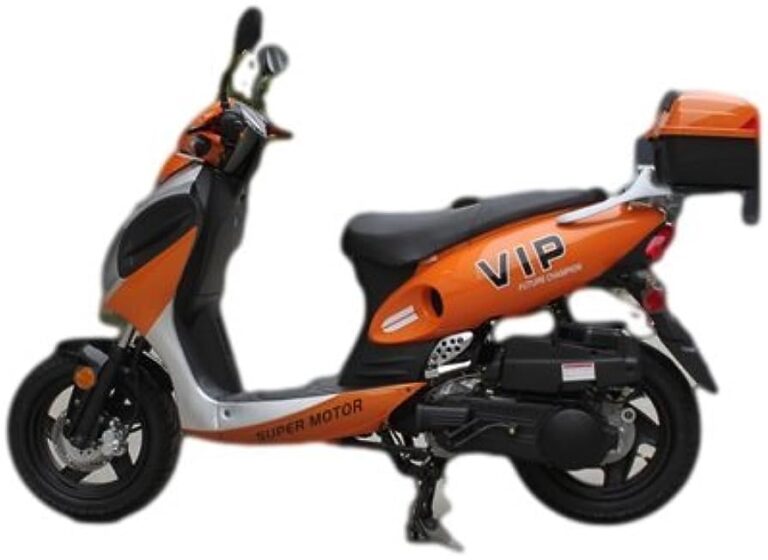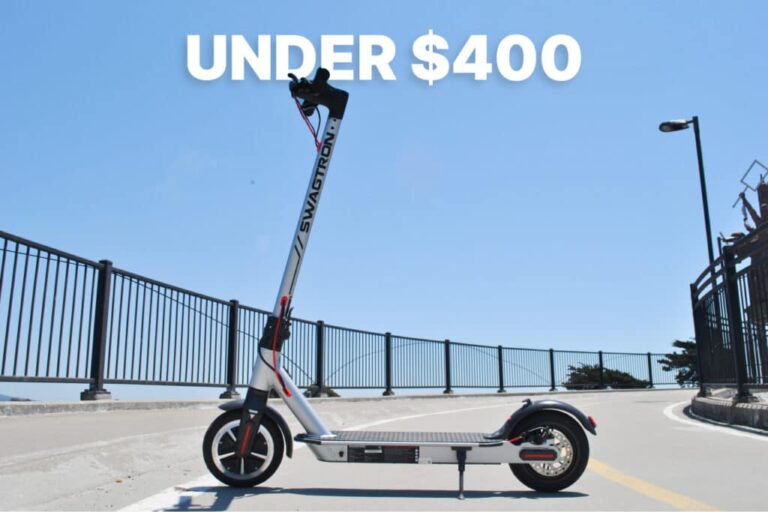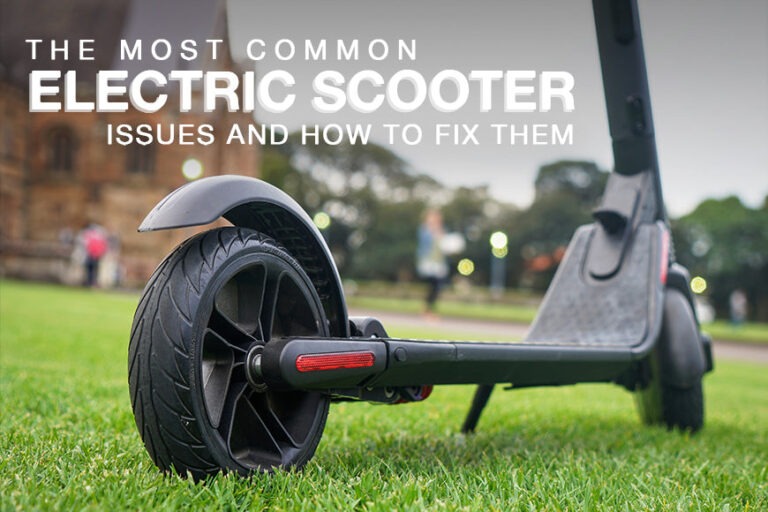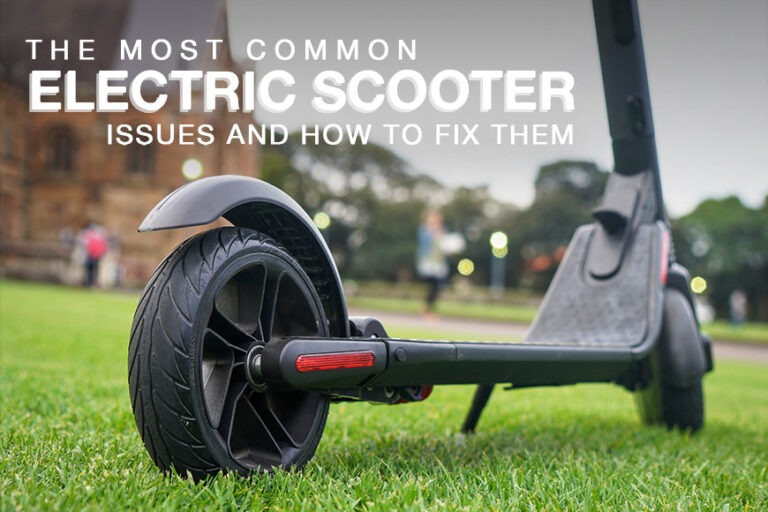How to Start Scooter Without Kick: Effortlessly Ignite Your Ride
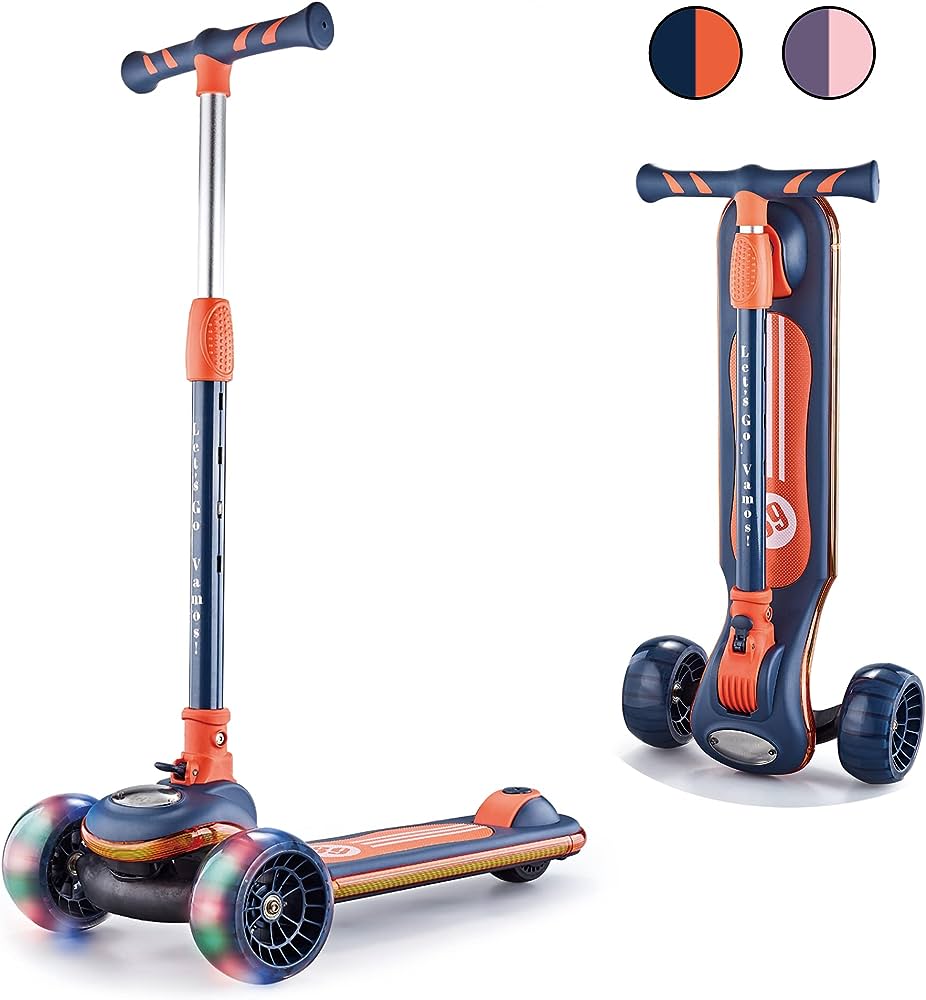
To start a scooter without using the kickstart, turn on the ignition and engage the electric start button. We will explore the different methods to start a scooter without relying on the kickstart, providing you with alternative solutions to get your scooter up and running smoothly.
Starting a scooter without the need for a kickstart can be beneficial in various situations, such as when the kickstart mechanism malfunctions or when you simply prefer the convenience of using the electric start. By following the steps outlined you will be able to start your scooter efficiently and without any hassle.
Whether you are a scooter enthusiast or a beginner, understanding these alternative methods will equip you with the knowledge to keep your scooter in great condition and enjoy smooth rides whenever you need. So let’s dive in and learn how to start a scooter without using the kickstart.
Understanding The Ignition System
Want to start your scooter without using the kick? Understand the ignition system and learn how to effortlessly start your scooter with ease. Master the art of hassle-free ignition and hit the road without any trouble.
Overview Of Scooter Ignition Systems
Scooters come equipped with various types of ignition systems that allow you to start the engine. Understanding how these systems work can help you troubleshoot any issues that may arise. In this section, I will provide an overview of scooter ignition systems, explain the difference between kick start and electric start, and highlight the importance of a well-functioning ignition system.
Explaining The Difference Between Kick Start And Electric Start
- Kick start:
- Kick starting a scooter involves using a lever located on the side of the scooter to manually start the engine.
- Once you engage the lever with a swift downward motion, the engine will undergo compression, resulting in ignition.
- Kick start systems are commonly found on older scooters and require physical effort to start the engine.
- Electric start:
- Electric start systems, on the other hand, offer a more convenient method of starting your scooter’s engine.
- With electric start, you simply need to turn the ignition key or press a button, and the scooter’s starter motor engages to start the engine.
- This system is typically found on modern scooters and eliminates the need for physical exertion to start the engine.
Importance Of A Well-Functioning Ignition System
A well-functioning ignition system is crucial for the smooth operation of your scooter. Here’s why it matters:
- Reliable starting:
- A properly working ignition system ensures that your scooter starts efficiently and reliably every time you need it.
- Whether you rely on kick start or electric start, a faulty ignition system can lead to frustrating starting issues, causing delays and inconvenience.
- Efficient combustion:
- The ignition system plays a vital role in the combustion process, providing the spark needed to ignite the air-fuel mixture in the engine.
- A well-functioning system ensures optimal timing and spark strength, resulting in efficient combustion and better fuel efficiency.
- Overall engine performance:
- An ignition system that is in good condition contributes to the overall performance of your scooter’s engine.
- It helps provide a smooth and consistent power delivery, allowing you to enjoy a responsive and enjoyable riding experience.
- Safety:
- Ignition system problems can potentially impact your safety on the road.
- A malfunctioning system may cause sudden stalling or engine cutoffs, putting you at risk in traffic or challenging situations.
- Regular maintenance and attention to ignition system health can help prevent such safety hazards.
Understanding the different types of scooter ignition systems, such as kick start and electric start, and recognizing the importance of a well-functioning system is crucial for every scooter owner. Maintaining and servicing your scooter’s ignition system will not only ensure a hassle-free starting experience but also contribute to the overall performance and safety of your scooter.
So, keep your ignition system in top-notch condition and enjoy the ride!
Preparing Your Scooter For A Kick-Start Alternative
Prepare your scooter for a kick-start alternative with these simple steps. Learn how to start your scooter without using the kick feature and enjoy a convenient and hassle-free ride.
When it comes to starting your scooter without a kick, there are a few essential steps you need to follow to ensure a smooth ride. By taking the time to prepare your scooter properly and thoroughly checking key components, you’ll be ready to get moving in no time.
Here, we outline three crucial steps to get your scooter ready for a kick-start alternative.
Ensuring The Scooter Is In Neutral Gear:
- Place the scooter on a level surface and engage the handbrake to prevent any unwanted movement.
- Check the gear shifter to make sure it is in the neutral position. This is usually indicated by an “N” on the display or by the neutral light being illuminated.
- Ensure the scooter is not in gear by pressing the clutch lever, if applicable, and attempting to roll the scooter forward or backward.
- Double-check the neutral position before proceeding with the kick-start alternative method.
Checking The Battery And Electrical Connections:
- Inspect the battery for any signs of damage or corrosion. Remove any debris or build-up with a clean cloth.
- Verify that the battery terminals are securely connected, ensuring both positive (+) and negative (-) terminals are tight and free of dirt.
- Test the battery voltage using a multimeter, aiming for a reading between 12.6 and 13.2 volts. If the battery voltage is low, consider charging it before attempting to start the scooter.
- Examine the electrical connections, including the spark plug wire and ignition coil connections, for any loose or damaged parts. Tighten or replace components as necessary.
Performing A Basic Inspection Of Ignition Components:
- Inspect the spark plug for signs of wear, such as dark deposits or an eroded electrode. If necessary, replace the spark plug following the manufacturer’s recommendations.
- Check the ignition switch to ensure it is in the “ON” position. Some scooters have a separate key for the ignition, so make sure it is inserted correctly.
- Examine the ignition wiring for any damaged or frayed insulation. If you notice any issues, it is advisable to seek professional assistance for repairs.
- Test the ignition coil by disconnecting the spark plug wire and verifying a strong spark when the engine is turned over.
By following these three important steps, you’ll be able to prepare your scooter for a kick-start alternative. Remember, it’s essential to ensure the scooter is in neutral gear, check the battery and electrical connections, and perform a basic inspection of the ignition components.
With these precautions in place, you’ll be ready to hit the road hassle-free.
Alternative Methods To Start Your Scooter Without A Kick
Starting a scooter without a kick is possible through alternative methods. Discover new ways to initiate your scooter’s engine effortlessly.
Method 1: Using A Push Start
In certain situations, your scooter’s kickstart may not be functioning properly or might not be available at all. In such cases, there are alternative methods you can use to start your scooter. One such method is a push start. This involves relying on the scooter’s momentum to start the engine.
Keep reading to find out how to perform a push start successfully.
Necessary Conditions For A Successful Push Start:
To perform a push start, you need to ensure that the following conditions are met:
- Your scooter’s battery should have enough charge to power the ignition and fuel system.
- The scooter’s engine should be in good condition and not malfunctioning.
- The scooter needs to be on a flat or slightly sloping surface, making it easier to gain momentum.
Step-By-Step Guide To Push Start Your Scooter:
Follow these steps to successfully perform a push start on your scooter:
- Stand next to your scooter and position yourself to push it forward.
- Place the scooter in neutral by ensuring that the gear shifter is in the middle position.
- Sit on the scooter and turn the ignition switch to the “on” position.
- Keep the brakes engaged and push the scooter forward using your feet.
- Once you’ve gained enough momentum, release the brakes and simultaneously hop onto the scooter, trying to find the balance point.
- Quickly release the clutch lever and give a slight twist to the throttle.
- If the push start is successful, the engine will start running, and you can ride your scooter normally.
Method 2: Using A Jumpstart
Another alternative method to start your scooter without a kick is using a jumpstart. This method involves drawing power from an external source, such as another vehicle’s battery, to start your scooter. Here’s what you need to know about jumpstarting your scooter.
Understanding The Jumpstart Process:
To jumpstart your scooter, you’ll need a set of jumper cables and access to a vehicle with a working battery. Here’s how the process works:
- Position the jumpstarting vehicle next to your scooter, ensuring that the two batteries are in close proximity.
- Connect one end of the positive (+) jumper cable to the positive terminal of the jumpstarting vehicle’s battery.
- Attach the other end of the positive (+) jumper cable to the positive terminal of your scooter’s battery, if accessible. If not, attach it to the starter solenoid or a metal part of the scooter’s frame.
- Connect one end of the negative (-) jumper cable to the negative terminal of the jumpstarting vehicle’s battery.
- Attach the other end of the negative (-) jumper cable to a clean, unpainted metal part of your scooter’s frame, away from the battery and fuel system.
- Start the jumpstarting vehicle and let it run for a few minutes to charge your scooter’s battery.
- After some time, attempt to start your scooter’s engine. If successful, your scooter should start running.
Tips For Safely Jumpstarting Your Scooter:
Here are some important tips to keep in mind when jumpstarting your scooter:
- Always double-check the polarities before connecting the jumper cables to the batteries.
- Ensure that the jumper cables are secure and won’t get tangled or come loose during the process.
- Avoid creating sparks or coming into contact with the battery terminals.
- If the jumpstart doesn’t work after a few attempts, it’s advisable to consult a professional mechanic or service center to diagnose the issue.
Remember, using a push start or jumpstart are temporary solutions and should not replace proper maintenance or repair. It’s always recommended to address the underlying issue with your scooter’s kickstart as soon as possible.

Credit: hikerboyscooter.com
Troubleshooting Common Issues
Learn how to troubleshoot common issues with starting your scooter without using the kickstart. Our step-by-step guide will help you get your scooter up and running in no time.
Identifying Why Your Scooter Isn’T Starting Without A Kick
We’ve all been there – ready to hop on our scooter, only to find it refusing to start without a kick. Before you start worrying about costly repairs or frustrations, it’s essential to troubleshoot common issues that may be causing this problem.
Here, we’ll explore the key factors and provide DIY troubleshooting techniques to get your scooter up and running again.
Common Issues Related To The Ignition System
The ignition system plays a vital role in starting your scooter without a kick. If you’re facing difficulties, these common issues might be the culprits:
- Faulty ignition switch: A faulty ignition switch can prevent your scooter from starting, even if the engine is in good condition. This issue is often caused by worn-out contacts or loose wiring.
- Defective ignition coil: If the ignition coil isn’t functioning correctly, it can’t generate the necessary spark to ignite the fuel and air mixture in the engine. This could result from a damaged or worn-out coil.
- Dead battery: A dead or weak battery can cause your scooter to have difficulty starting without a kick. If your scooter relies on an electric starter, a functioning battery is crucial.
Diy Troubleshooting Techniques To Fix Common Problems
Now that we’ve identified potential issues with the ignition system, let’s explore some DIY troubleshooting techniques to get your scooter back on track:
- Check the ignition switch: Inspect the ignition switch for any visible damage or loose connections. If it appears damaged, it may need replacing. Ensure all wires are securely connected.
- Test the ignition coil: Use a multimeter to check the ignition coil’s resistance. If the reading is outside the specified range, the coil may need to be replaced. Be sure to consult your scooter’s manual for the correct resistance values.
- Assess the battery: Check the battery’s charge level using a voltmeter. If the voltage is below the recommended level, you may need to charge or replace the battery. Clean any corrosion from the battery terminals.
Remember, if you are unsure or uncomfortable with conducting these troubleshooting techniques yourself, it’s always best to consult a professional mechanic. They have the expertise to diagnose and resolve complex issues effectively.
By following these DIY troubleshooting techniques, you can often address common ignition system issues that prevent your scooter from starting without a kick. Empower yourself with the knowledge to tackle these problems head-on and enjoy a hassle-free ride every time you hop on your scooter.
Maintaining Your Scooter’S Ignition System
Start your scooter without using the kick by properly maintaining the ignition system. Follow these steps to ensure a smooth and hassle-free start every time.
Importance Of Regular Maintenance For A Smooth Start:
Regular maintenance is crucial for ensuring your scooter starts smoothly without relying on the kick-start feature. By paying attention to your scooter’s ignition system, you can enhance its performance and prolong its lifespan. Here are some key aspects to focus on:
- Cleaning and Lubricating Ignition Components:
- Regularly clean the ignition switch and keyhole using a soft cloth to remove dirt and debris.
- Lubricate the keyhole and ignition switch with a graphite-based lubricant to prevent any sticking or jamming.
- Ensure the key moves smoothly in the ignition switch without any resistance.
- Regular Inspection and Replacement of Worn-Out Parts:
- Inspect the spark plug periodically and clean it using a wire brush if necessary.
- Replace the spark plug if it shows signs of wear or damage.
- Check the ignition coil for loose connections or signs of corrosion. If needed, clean or replace it.
- Verify that the wires connecting the ignition system are securely connected and free from any damage.
- Inspect the battery to ensure it is in good condition and has sufficient charge.
By adhering to these maintenance practices, you can significantly improve your scooter’s ignition system’s reliability, leading to a smooth start every time. Remember, prevention is key to avoiding unexpected issues and unwanted delays.
Ensuring Safety And Reliability
Start your scooter hassle-free by following these simple steps to bypass the kick start and ensure a safe and reliable ride.
Importance Of Safety Gear While Starting Your Scooter:
- Wearing the right safety gear is crucial for your protection when starting your scooter.
- Proper safety gear helps prevent injuries in case of accidents or unexpected mishaps.
- The following safety equipment is highly recommended before beginning the process of starting your scooter:
- Helmet: Wearing a sturdy helmet safeguards your head from potential head injuries.
- Gloves: Good quality gloves provide a firm grip while handling the scooter’s controls.
- Riding Jacket: A durable riding jacket not only protects your upper body but also offers better visibility to other road users.
- Knee and Elbow Pads: These protectors minimize the impact on your joints in case of falls or sudden stops.
- Closed-toe Shoes: Sturdy shoes offer stability and protect your feet from potential injuries.
Tips For Ensuring A Reliable Ignition System:
- A reliable ignition system is essential for a smooth start and trouble-free riding experience. Follow these tips to ensure the reliability of your scooter’s ignition system:
- Regular Maintenance: Regularly inspect and maintain your scooter’s ignition system, including the battery, spark plug, and wiring connections.
- Battery Check: Ensure your battery is fully charged to avoid any starting issues. Clean the terminals regularly to prevent corrosion.
- Spark Plug Inspection: Check the spark plug for fouling or signs of wear and replace it if necessary. A clean spark plug ensures a strong and consistent spark for ignition.
- Fuel Quality: Always use high-quality fuel to prevent fuel-related issues that can affect the ignition. Avoid using stale or contaminated fuel.
- Ignition Switch Functionality: Ensure that the ignition switch is functioning properly, without any loose connections or faulty components.
Signs That Indicate A Need For Professional Assistance:
- While it’s possible to start a scooter without kick, certain signs may indicate the need for professional assistance. If you encounter any of the following issues, it’s recommended to consult a mechanic or technician:
- No Ignition Sound: If you turn the ignition key and there is no sound, it could indicate a problem with the battery, starter motor, or ignition switch.
- Engine Cranks but Doesn’t Start: If you hear the engine cranking but it fails to start, it could be due to issues with the fuel system, spark plug, or ignition timing.
- Intermittent Starting Problems: If the scooter starts inconsistently or only after several attempts, it may indicate underlying ignition system issues that need expert attention.
- Unusual Noises or Odors: Strange noises like grinding or clicking sounds, or unusual smells like burning rubber, may signify a more significant problem with the ignition system.
Remember, prioritizing safety and having a reliable ignition system are key factors for a stress-free scooter starting experience. By following these tips and knowing when to seek professional assistance, you can ensure a smooth ride ahead.
Conclusion (Not A Heading)
Starting your scooter without using the kick-start can be easily achieved with a few simple steps. By following this comprehensive guide, you’ll be able to initiate your scooter effortlessly and without the need for a kick-start.
Starting a scooter without a kick can be a real lifesaver in certain situations. Whether you’re dealing with a dead battery or a faulty kick start mechanism, it’s crucial to be aware of alternative methods to get your scooter up and running.
In this section, we will recap the key points we discussed, emphasize the importance of knowing these alternative methods, and encourage you to practice safe and efficient techniques for a smooth ride.
Recap Of The Key Points Discussed:
- Using the electric starter: If your scooter comes equipped with an electric starter, this is the most convenient and hassle-free option. Simply turn the key, locate the starter button, and press it to ignite the engine.
- Push-starting the scooter: This method requires a bit of physical effort, but it can get your scooter running when other options fail. Start by pushing the scooter to a moderate speed, hop on, engage the clutch, and release it quickly while opening the throttle. This action will engage the engine and hopefully result in a successful start.
- Jumpstarting the scooter: When dealing with a dead battery, a jumpstart can bring your scooter back to life. Use jumper cables and connect the positive terminals of both the working battery and the dead battery. Then, connect the negative terminal of the working battery to a metal part of the scooter’s engine. Start the working scooter, let it run for a few minutes, and then try starting your scooter.
Importance Of Knowing Alternative Methods To Start A Scooter Without A Kick:
Being aware of alternative methods to start your scooter without relying solely on the kick start mechanism is essential for several reasons:
- Emergency situations: Imagine being stranded in an unfamiliar location with no kick start option available. Knowing alternative methods can save you from potential danger or inconvenience.
- Wide usability: Different scooter models may have different kick start mechanisms. Understanding alternative methods ensures that you can start any scooter you encounter, regardless of its specific features.
Encouragement To Practice Safe And Efficient Techniques For A Smooth Ride:
While knowing how to start a scooter without a kick is valuable, it’s equally important to ensure your safety and the efficient operation of your scooter. Here are some additional tips to keep in mind:
- Regular maintenance: Maintain your scooter’s battery, electrical system, and starter motor to minimize the chances of encountering starting issues.
- Safe riding practices: Familiarize yourself with the local traffic regulations, wear appropriate protective gear, and follow all safety precautions while riding your scooter.
- Prevention over cure: Whenever possible, avoid situations that may lead to starting problems by taking preventive measures such as regularly starting your scooter, keeping the battery charged, and storing it in a safe and dry place.
Remember, practicing safe and efficient techniques not only ensures a smooth ride but also prolongs the lifespan of your scooter.
Now that you’re equipped with the knowledge of alternative starting methods and their importance, you can confidently handle starting issues and enjoy a hassle-free scooter experience. Stay safe, keep your scooter in excellent condition, and get ready to hit the road with ease!
Frequently Asked Questions On How To Start Scooter Without Kick
Why Do I Have To Kick Start My Scooter?
To kick start your scooter, you need to provide the initial power needed for the engine ignition.
How Do You Force Start A Scooter?
To force start a scooter, turn the key to the “on” position, twist the throttle, and press the starter button.
Can You Kick Start A Scooter With A Dead Battery?
Yes, you can kick start a scooter with a dead battery by using the kick start lever.
Can You Start A Scooter By Pushing It?
Yes, you can start a scooter by pushing it.
Conclusion
Starting a scooter without a kick can be a challenge, but it is not impossible. By following the steps outlined in this blog post, you can successfully get your scooter up and running without relying on the kickstart. Remember to check your battery and ignition system, as they play a crucial role in starting the engine.
Additionally, keep your scooter well-maintained by regularly servicing it and checking for any potential issues. Implementing these tips will not only help you in starting your scooter without a kick but also ensure its overall performance and longevity. So, the next time you find yourself with a scooter that won’t start, don’t panic.
Instead, take a moment to troubleshoot and try the alternative methods discussed in this post. You’ll be back on the road in no time, enjoying the freedom and convenience of your scooter.

